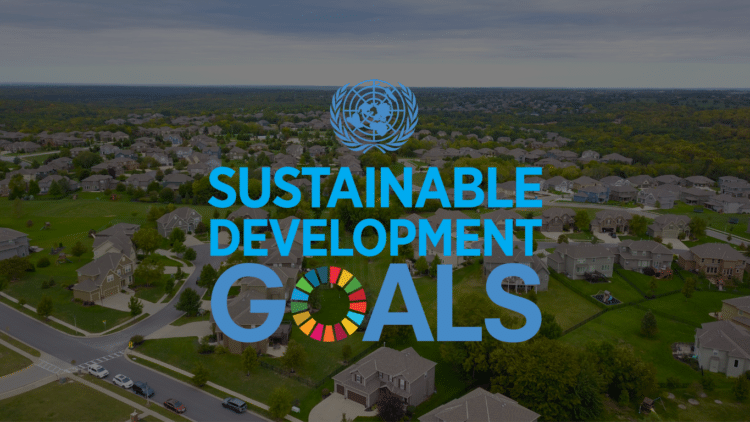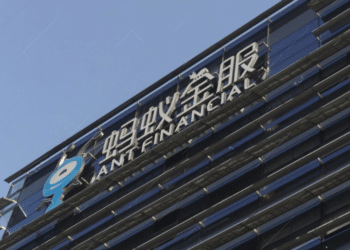Climate change is a rapidly growing concern in today’s world, and its impact is already being felt in several sectors, including the UK housing market. In the years to come, the effects of climate change are likely to become more pronounced, and it is important for homeowners, investors, and policymakers to understand how climate change may affect the UK housing market.
- Rising sea levels and flood risk
- Extreme weather events and insurance costs
- Energy efficiency and green infrastructure
- Changing weather patterns and location attractiveness
- Regulatory changes and energy efficiency standards
- The role of sustainable investments and green financing
- Summary on Climate Change
- How are the UN sustainable development goals affecting the UK housing market?
- Affordable Housing
- Energy Efficiency
- Green Spaces
- Social Inclusion
- Circular Economy
- Technological Innovation
Rising sea levels and flood risk
One of the most significant ways in which climate change may affect the UK housing market is through rising sea levels and flood risk. With sea levels expected to rise by up to a meter by the end of this century, coastal properties are likely to be at risk of flooding. According to the Environment Agency, more than five million properties in England are at risk of flooding, with around 1.3 million of those at risk of significant flooding. As a result, property values in flood-prone areas may be negatively impacted, and homeowners may face higher insurance premiums.
Moreover, flooding events in recent years have caused significant damage to properties and infrastructures across the UK. For instance, in 2014, the winter floods caused damage to more than 3,000 homes in Somerset, and in 2020, Storms Ciara and Dennis resulted in flooding that affected over 1,500 properties in Wales and England. The damage caused by such events can result in costly repairs, lower property values, and higher insurance premiums.
Extreme weather events and insurance costs
In addition to rising sea levels, climate change is also likely to lead to more frequent and severe extreme weather events, such as heatwaves, storms, and heavy rainfall. These events may result in higher insurance costs for homeowners, particularly those living in high-risk areas. In fact, a report by the Association of British Insurers (ABI) estimated that climate change could lead to a 20% increase in UK insurance premiums by 2025.
Extreme weather events can also cause significant damage to properties and infrastructure. For example, heatwaves can lead to subsidence, which is the sinking or settling of the ground beneath a property. This can result in cracked walls, ceilings, and floors, and can be expensive to repair. Similarly, storms and heavy rainfall can cause damage to roofs, walls, and foundations, leading to costly repairs and lower property values.
Energy efficiency and green infrastructure
Despite the negative impacts of climate change on the UK housing market, there are also potential opportunities for homeowners and investors. One of these opportunities is the increasing value of energy-efficient homes and green infrastructure, evidenced in new developments such as the Rylands building in Manchester. As more people become aware of the importance of sustainability, homes with energy-efficient features such as solar panels, insulation, and smart heating systems may become more valuable. Additionally, green infrastructure such as urban gardens and green roofs may also increase property values.
Energy-efficient homes can save homeowners money on their energy bills, and may also be more comfortable to live in. Moreover, sustainable features such as solar panels and energy-efficient windows can increase the value of a property. Similarly, green infrastructure can provide a range of benefits, including reducing urban heat island effects, improving air quality, and providing green spaces for residents to enjoy.

Changing weather patterns and location attractiveness
Climate change may also affect the desirability of certain locations for homeowners and investors. For example, areas that are particularly vulnerable to flooding or extreme weather events may become less attractive to buyers, while areas that are less vulnerable may become more desirable. Additionally, changing weather patterns may lead to an increase in demand for homes in areas with milder temperatures or more consistent weather patterns.
For instance, homes in the Southwest of England, which are at higher risk of flooding, may become less attractive to buyers as flooding events become more frequent. Meanwhile, homes in areas with more moderate climates, such as parts of Scotland and Northern Ireland, may become more attractive as people seek to avoid the more extreme weather patterns that are expected to become more common in the future.
Regulatory changes and energy efficiency standards
The UK government has set ambitious targets to reduce greenhouse gas emissions and combat climate change, and this is likely to have an impact on the housing market. In particular, regulatory changes and energy efficiency standards may affect the value of properties. For example, properties with a low energy efficiency rating are less attractive to buyers, while those with higher ratings may become more valuable.
The government has introduced a range of measures to improve the energy efficiency of homes, including the Energy Performance Certificate (EPC) rating system and the Green Homes Grant. The EPC rating system provides information about the energy efficiency of a property, while the Green Homes Grant provides funding for homeowners to install energy-efficient measures such as insulation, double glazing, and heat pumps.
These measures may increase the value of properties that have a high EPC rating or have had energy-efficient upgrades.
The role of sustainable investments and green financing
Another potential opportunity for homeowners and investors in the face of climate change is sustainable investments and green financing. Sustainable investments involve investing in companies or assets that have a positive impact on the environment, such as renewable energy projects or energy-efficient buildings. Green financing involves using financial products to fund environmentally sustainable projects or activities.
In recent years, there has been a growing interest in sustainable investments and green financing in the UK. This has led to the development of a range of financial products, such as green mortgages and green bonds, which provide financial incentives for homeowners and investors to adopt sustainable practices. These products may increase the value of properties that have sustainable features or are located in sustainable developments.
Summary on Climate Change
In conclusion, climate change is likely to have a significant impact on the UK housing market in the years to come. Rising sea levels and flood risk, extreme weather events and insurance costs, energy efficiency and green infrastructure, changing weather patterns and location attractiveness, regulatory changes and energy efficiency standards, and sustainable investments and green financing are all factors that are likely to influence the value and desirability of properties.
It is essential for homeowners, investors, and policymakers to understand these impacts and take action to mitigate them to ensure the long-term sustainability of the UK housing market.
How are the UN sustainable development goals affecting the UK housing market?
The United Nations has developed a set of Sustainable Development Goals (SDGs) that aim to eradicate poverty, reduce inequality, and tackle climate change by 2030. These goals have far-reaching implications for every industry, including the UK housing market. In this section, we will explore how the SDGs are affecting the UK housing market.
Affordable Housing
One of the key SDGs is to ensure access to affordable, safe, and sustainable housing for all. The UK government has set a target of building 300,000 new homes per year to meet this goal. However, the current demand for affordable housing in the UK far outstrips supply, leading to a housing crisis. As a result, the government has introduced various schemes and initiatives to boost affordable housing, such as the Help to Buy scheme and the Affordable Homes Programme.
Energy Efficiency
Another SDG is to reduce greenhouse gas emissions and promote sustainable energy. The housing sector is responsible for around 20% of the UK’s carbon emissions, primarily from heating and electricity use. To address this, the UK government has set a target for all new homes to be zero-carbon by 2025. In addition, landlords are now required by law to ensure their properties meet minimum energy efficiency standards.
Green Spaces
The SDGs also prioritize the creation of green spaces and sustainable cities. This has led to a growing trend of incorporating green spaces into new housing developments, such as community gardens and rooftop gardens. These spaces not only provide a recreational area for residents but also contribute to carbon sequestration and help combat air pollution.
Social Inclusion
The SDGs also aim to reduce inequality and promote social inclusion. This has led to a growing emphasis on building mixed-income developments, where affordable and social housing is integrated into larger, private developments. This approach promotes social interaction and can help reduce social isolation and exclusion.
Circular Economy
The SDGs also prioritize the transition to a circular economy, where waste is minimized, and resources are reused and recycled. This has led to a growing trend of using sustainable materials in construction and promoting the use of circular business models. For example, some companies are exploring ways to recycle construction waste into new building materials.
Technological Innovation
The SDGs also encourage technological innovation to achieve sustainable development. This has led to the development of smart homes, which use technology to reduce energy consumption and improve efficiency. For example, smart thermostats can learn residents’ schedules and adjust heating accordingly, while smart lighting can adjust brightness depending on natural light levels.
In conclusion, the Sustainable Development Goals have had a significant impact on the UK housing market, driving initiatives to promote affordable housing, energy efficiency, green spaces, social inclusion, circular economy, and technological innovation. By aligning with these goals, the UK housing market is not only addressing pressing global challenges but also promoting sustainable development that benefits the wider society.















